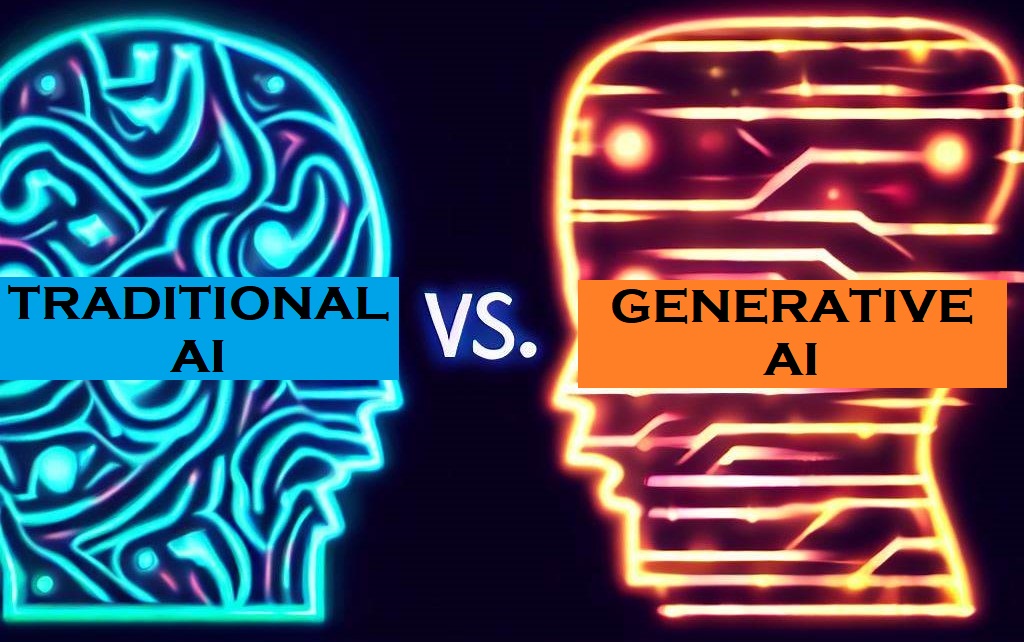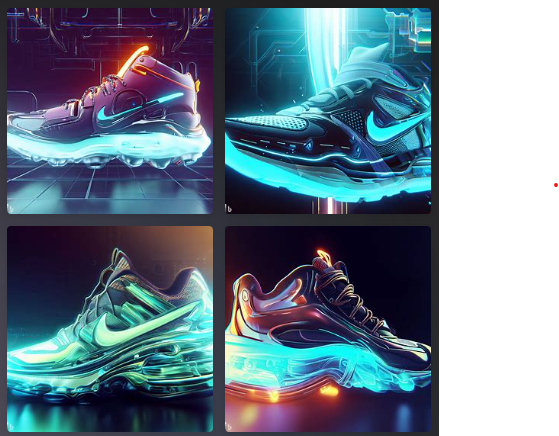Generative AI represents an entirely new capability in artificial intelligence – the ability to create novel content as opposed to just analyzing existing data. In this comprehensive guide, we’ll explore what makes generative AI unique, the techniques powering it, current and potential use cases, as well as important considerations around governance.
Table of Contents
How Generative AI Differs from Traditional AI
Most AI developed historically focuses on analysis and pattern recognition. For instance, machine vision algorithms can classify objects within images or detect anomalies. Natural language processing models can translate text between languages based on learned mappings.
These analytical AI approaches rely on identifying patterns and correlations in training data. But they don’t synthesize anything from scratch.


Generative AI takes a profoundly different approach of creativity. For example:
- A computer vision classifier may label a picture as containing a cat. But it wouldn’t imagine a new cat!
- A machine translator converts between languages. But it doesn’t compose original poetry.
- A recommendation system suggests products based on your history. But it doesn’t ideate new products.
In contrast, generative AI models create novel artifacts, media, or content that has never existed before:
- Dream up imaginary portraits of people who don’t exist
- Convert text descriptions into photorealistic images
- Synthesize spoken audio of a historical figure in their own voice
- Design molecules with specified chemical properties
- Develop original stories, jokes, dialogue, and any form of creative expression
Instead of recognizing patterns, generative AI learns the underlying representations that comprise our world, enabling it to render entirely new examples.
Key Techniques Behind Generative AI
Several machine learning breakthroughs over the past decade have enabled the rise of generative AI models:
Generative Adversarial Networks
Generative adversarial networks (GANs) involve training two neural networks against each other. One generates content while the other evaluates realism. Competing drives the outputs to become increasingly realistic over time.
Notable examples of GANs include StyleGAN for generating fake human portraits and BigGAN for creating images from captions.
Variational Autoencoders
VAEs learn compressed representations of data distributions, allowing sampling of the latent space to generate new plausible data points. For instance, VAEs are used to generate new molecular structures.
Proposed in 2013, VAEs consist of two networks – an encoder compresses data into a latent space representation while the decoder reconstructs it. By sampling points from the continuous latent space, VAEs can generate new plausible data points. The compressed latent space also enables tasks like editing attributes of data points.
VAEs laid the groundwork for learning compressed representations of data distributions. But they were outperformed in realism by subsequent GAN models.
Diffusion Models
Diffusion models take an unusual approach – they train a model to reverse a diffusion process that scatters data into noise. By carefully controlling this diffusion trajectory, very realistic samples can be gradually recovered from noise.


DALL-E 2 uses a diffusion model conditioned on text prompts to generate images. Diffusion models offer control over the generative process and high sample quality. But they require long generation times.
Diffusion models train AI to reverse a data diffusion process, enabling coherent generation from noise. DALL-E 2 generates images from text prompts using this technique.
Autoregressive Models
Models like GPT-3 are trained to predict the next token (e.g. word) in a sequence, enabling text generation. By sampling from the predictions iteratively, they can generate coherent outputs like text, code, and music.
The raw generative capability of large autoregressive LMs pre-trained on internet data has enabled applications like text generation with few-shot prompting. However, they are prone to factual inaccuracies and bias.
Hybrid Approaches
State-of-the-art generative models like Imagen combine multiple techniques like diffusion and adversarial learning. Many recent state-of-the-art generative models draw ideas from multiple techniques. For instance, Imagen combines diffusion models with adversarial training for text-to-image generation. We are likely to see more hybridization of different generative techniques in the future.
In summary, generative AI has rapidly evolved through key innovations like GANs, VAEs, diffusion, autoregressive modeling, and combinations thereof. Sustained progress in neural network architectures, computational power, and availability of data has fueled these inventions.
Current and Emerging Use Cases
The unique capabilities unlocked by generative models are leading to a diverse array of applications across industries:
Creative Fields
- Composing music or poetry based on a description of the genre, mood etc.
- Designing logos, posters, and brochures based on brand identity prompts
- Synthesizing photos or videos based on natural language scene descriptions
- Automating graphic design and multimedia work
Science and Engineering
- Molecular design and drug discovery by generating novel compounds predicted to have desired properties
- Predicting protein structures from amino acid sequences
- Designing mechanical parts, circuits, and architectures optimized for specifications
- Data augmentation by generating additional synthetic training data
Natural Language Processing
- Summarize lengthy documents, and generate text for ads, reports, stories, etc.
- Convert outlines into full-length articles, papers, content pieces
- Chatbots and conversational agents with more natural, dynamic responses
- Automate customer support, surveys, and research through conversational UI
Voice Assistants and Services
- Synthesize audio in any voice, accent or language
- Vocal cloning to recreate a person’s voice
- Text-to-speech with prosody and intonation modeling
- Next-generation automated call center agents


The big three: Google Assistant, Siri and Alexa represent the major players in the voice assistant market. While they each have their strengths, Google Assistant is often considered the most capable with the highest accuracy and most natural responses.
These are just some of the many potential use cases of generative AI. As models continue rapidly improving, more previously impossible applications will emerge across industries.
Following images were created by bingAI image creator


These examples only scratch the surface of generative AI’s potential across industries. The capabilities are rapidly evolving.
Promises and Risks of Generative AI
Generative AI comes with both tremendous opportunities as well as risks to carefully consider:
Creative Potential
By automating rote work and providing ideation beyond human imagination, generative AI could unlock new levels of human creativity. It may assist rather than replace artists, musicians, writers and other creators.
Economic Impact
Widespread generative capabilities could enable new businesses, transform existing industries, and make certain types of work redundant. Managing this economic transition ethically will be crucial.
Fake Media and Misinformation
The ability to generate believable fake videos, audio, images and text at scale has dangerous implications for fraud and misinformation. Detecting AI-generated content will be critical.
Bias and Representation
Data biases in the generative model training pipeline could lead to issues like lack of diversity or problematic stereotypes perpetuated through synthesis.
Legal and IP Challenges
Generated content based loosely on copyrighted works creates ambiguity around ownership rights and proper attribution. Regulations will need addressing this.
There are certainly many more factors to consider around generative AI. The hope is that with sufficient foresight and planning, policies can be enacted to maximize benefits while mitigating risks as generative models continue rapidly advancing.
The Road Ahead


Generative AI represents a paradigm shift for how we create, ideate and problem-solve. We are only beginning to glimpse its potential – from accelerating scientific discoveries to realizing entirely new creative genres. After decades focused on analytical AI, this new generative capability is opening up an exciting frontier.
But it also poses new and complex ethical dilemmas. Managing issues like bias, misinformation, copyrights, and economic impacts responsibly will require extensive debates involving scientists, governments, businesses, and society as a whole.
One thing is clear – generative AI will lead to previously unimaginable possibilities. Guiding it wisely will determine whether it makes our lives happier, healthier and more inspired or distorts our shared information landscape. An awe-inspiring and challenging journey lies ahead!
